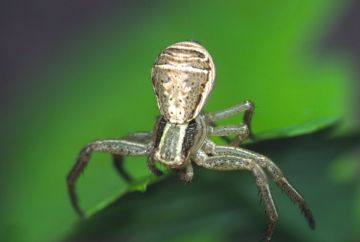Summary for Xysticus ulmi (Araneae)
previous species | next species
National Distribution
Terms of Use. Double-click on map to go to region

Explore Regional Distribution
Please log on and add a note on this species
About this species
Recorded altitude range0m to 549m
Species text
DistributionThe species is widespread in the southern half of Britain mainly towards the east, becoming scattered in the west and north as far as central Scotland. However X. ulmi appears to be genuinely absent or very rare in the extreme south-east of the country. It is widespread in western and central Europe.
Habitat and ecology
The spider usually occurs on low vegetation and in the ground layer in damp situations, especially in marshes, fens, and rough grassland, but in North Essex it is also found in ditches alongside arable fields, hedge banks, roadside verges and woodland especially in open and coppiced areas. Juveniles are often found in ground litter at the base of vegetation whereas adults are usually swept from herbage. Females guard their egg-sacs, usually near the tops of higher plants. Adults of both sexes are found mainly in May and June, females occasionally into the autumn.
Status
Local, but the spider may be frequent, as in north and west Essex. Its absence in the southern and eastern parts of Essex, the driest parts of Britain, may be the result of low rainfall and humidity.
Original author of profile: P.R. Harvey
Text based on Harvey, P.R., Nellist, D.R. & Telfer, M.G. (eds) 2002. Provisional atlas of British spiders (Arachnida, Araneae), Volumes 1 & 2. Huntingdon: Biological Records Centre. References
Adult Season
Habitats
background methodology
Recorded management for locations with Xysticus ulmi
Recorded substrate and hydrology for locations with Xysticus ulmi
Images
please log on and upload a new image for this speciesSee also A-Z Species Index - A-Z Picture Index - previous species | next species



